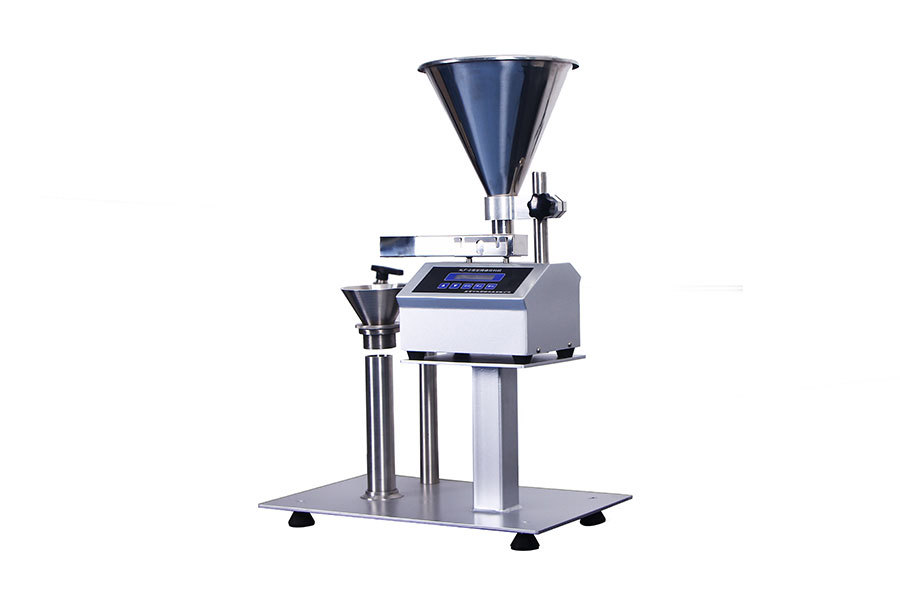Maximize Efficiency with Affordable Powder Repose Angle Testers: A Comprehensive Guide
Jul 01,2025

Maximize Efficiency with Affordable Powder Repose Angle Testers
Introduction to Powder Repose Angle Testers
In today's competitive landscape, industries are constantly seeking ways to enhance operational efficiency and product quality. One essential tool that can significantly contribute to achieving these goals is the **powder repose angle tester**. Understanding the importance of this device and how it operates can provide businesses with a strategic advantage in material handling and processing.
The Importance of Measuring Powder Repose Angles
Measuring the repose angle of powders is critical for several reasons:
1. Understanding Material Properties
The repose angle helps in determining the flowability and stability of powdered materials. By measuring the angle, industries can assess how well a substance will behave during storage, transportation, and processing.
2. Enhancing Product Formulation
Knowledge of repose angles can aid in creating better formulations for various products, especially in industries like pharmaceuticals, food, and cosmetics, where consistency is crucial.
3. Improving Manufacturing Processes
By utilizing repose angle data, manufacturers can optimize their processes, reduce waste, and enhance the efficiency of their operations, leading to cost savings and increased productivity.
Types of Powder Repose Angle Testers
When selecting a powder repose angle tester, it's essential to understand the different types available on the market:
1. Manual Powder Repose Angle Testers
These testers require manual operation and are typically less expensive. They are suitable for smaller operations or for those just starting to measure powder properties.
2. Digital Powder Repose Angle Testers
Digital testers provide more precise measurements and are equipped with digital displays, making them user-friendly and efficient for larger operations.
3. Automated Powder Repose Angle Testers
For large-scale manufacturing environments, automated testers can measure multiple samples quickly and efficiently, providing data that can be integrated into quality control systems.
Key Features to Look for in Powder Repose Angle Testers
Choosing the right powder repose angle tester involves considering various features:
1. Measurement Accuracy
Accuracy is paramount. Look for testers that provide precise measurements to ensure reliability in your results.
2. Ease of Use
User-friendly interfaces and straightforward instructions can significantly reduce the time required for training and operation.
3. Portability
For operations that require mobility, portable testers that are lightweight and easy to transport can be beneficial.
4. Durability
Investing in a durable tester ensures it can withstand the rigors of an industrial environment, providing long-term value.
Applications of Powder Repose Angle Testers
Understanding where and how to apply these testers can expand their usefulness across various industries:
1. Pharmaceutical Industry
In pharmaceuticals, the flowability of powders can affect tablet formulation and consistency. Employing repose angle testers helps ensure quality control in drug manufacturing.
2. Food Industry
Flowability is critical in food processing, particularly in the handling of bulk powders like flour and sugar. Tests ensure that ingredients mix uniformly and maintain quality.
3. Chemical Industry
In the chemical industry, the behavior of powders during mixing and drying processes can be assessed using repose angle measurements, leading to improved processing techniques.
4. Construction Industry
Construction materials often consist of powders, and understanding their flowability can impact mixing processes and the overall quality of construction compounds.
Choosing the Right Powder Repose Angle Tester for Your Needs
Selecting the right tester depends on various factors, including your specific requirements and budget constraints. Here are some steps to guide your decision:
1. Identify Your Requirements
Determine what you need from a tester, including the types of materials you'll be measuring, the frequency of use, and the level of accuracy required.
2. Set a Budget
Consider how much you're willing to invest in a powder repose angle tester. Keep in mind that while affordability is key, quality should not be compromised.
3. Research Available Options
Look for reputable brands and models that meet your requirements. Check reviews and consult industry experts if necessary.
4. Request Demos or Trials
Before making a purchase, request demonstrations or trials. This allows you to assess the tester's ease of use and efficiency firsthand.
Maintenance and Calibration of Powder Repose Angle Testers
To ensure optimal performance, regular maintenance and calibration of your powder repose angle tester are essential:
1. Routine Cleaning
After each use, clean the tester to prevent contamination and ensure accurate measurements. Use appropriate cleaning agents that will not damage the equipment.
2. Calibration
Regular calibration is crucial. Follow the manufacturer’s recommendations for frequency, and consider having a professional perform calibration to maintain accuracy.
3. Storage
Store the tester in a controlled environment to protect it from temperature fluctuations, humidity, and physical damage.
Frequently Asked Questions (FAQs)
1. What is the typical range of repose angles for powders?
Repose angles typically range from 20° to 50°, depending on the material. Finer powders generally have lower repose angles, indicating better flowability.
2. Can I use a powder repose angle tester for all types of powders?
Most testers are versatile, but it's essential to select one that suits the specific properties of the powders you intend to test.
3. How often should I calibrate my powder repose angle tester?
Calibration frequency depends on usage but should generally be performed at least once a month or before critical measurements.
4. Are digital testers better than manual ones?
Digital testers offer greater accuracy and ease of use, making them preferable for larger operations or those requiring precise measurements.
5. What industries benefit from using powder repose angle testers?
Industries such as pharmaceuticals, food processing, chemicals, and construction can all benefit from using powder repose angle testers to ensure material quality and improve processes.
Conclusion
Investing in an affordable powder repose angle tester is a strategic decision that can lead to significant improvements in efficiency and product quality across various industries. By understanding the features, applications, and maintenance requirements, businesses can maximize the benefits of these essential tools. As you explore your options, consider how these testers can integrate into your quality control processes and enhance your operational capabilities. Embrace the potential of powder repose angle testers to ensure that your materials perform optimally, leading to greater success in your industry.
PREVIOUS:
Contact Us








